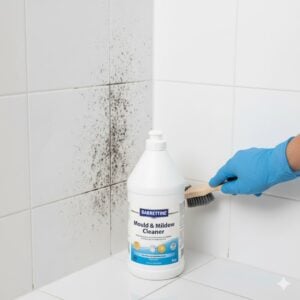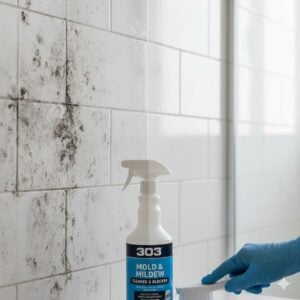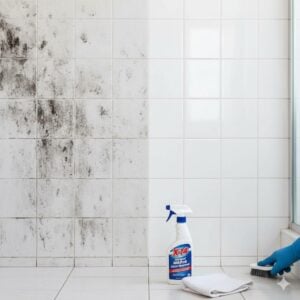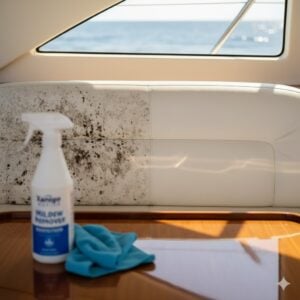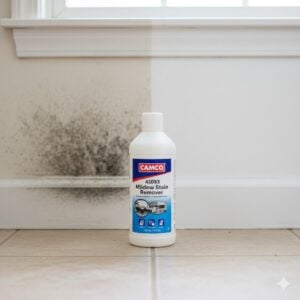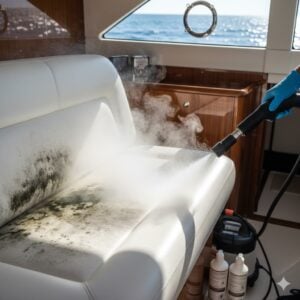Blood cleanup is a critical task, necessitated in various distressing scenarios such as unattended deaths, accidents, or crimes. Handling it requires not only technical precision but also a deep understanding of health and safety standards. Effective blood cleanup goes beyond mere surface cleaning; it’s about ensuring the complete removal of biohazards and restoring safety to the affected area. In this article, we will explore six crucial techniques that are essential for effective blood cleanup. These techniques are integral to addressing the complexities of blood as a biohazard, ensuring a thorough and safe restoration process in various challenging situations.
[lwptoc]
Table of Contents
Toggle1. Assessment of the Blood Contaminated Area
The initial step in the process of blood cleanup is a comprehensive assessment of the contaminated area. This critical evaluation serves as the foundation for the entire cleanup operation, determining the extent and nature of the contamination. When approaching a scene, whether it’s the aftermath of an unattended death, a serious accident, or a crime scene, the first task is to gauge the scope of the blood spill. This involves identifying not only the obvious areas of contamination but also those less visible spots where blood may have seeped into cracks, porous surfaces, or even absorbed into fabrics and upholstery.
A thorough assessment requires a keen eye for detail and a systematic approach. Professionals trained in blood cleanup understand that blood can behave unpredictably, sometimes splattering far from the original source or seeping deeper into materials than initially apparent. They look for splatters, drips, and pooled blood, considering gravity and the layout of the room to predict where blood might have traveled. This step is crucial in environments where the risk of bloodborne pathogens is high, as seen in scenarios of unattended deaths (internal link to 7 Key Aspects of Unattended Death Cleanups). Pathogens like HIV, Hepatitis B, and C can survive in dried blood for days to weeks, posing a significant health risk.
The assessment also includes evaluating the types of surfaces affected and determining the appropriate cleaning methods for each. Different materials – from hardwood floors to carpet fibers – require different cleaning approaches to effectively remove blood without causing damage. The assessment phase is also when potential hazards, such as broken glass or sharp objects contaminated with blood, are identified and plans are made for their safe removal.
This meticulous evaluation sets the stage for the entire cleanup process. It ensures that every trace of blood, visible or not, is accounted for and that the subsequent cleanup steps are tailored to address the specific situation effectively. By thoroughly assessing the contaminated area, professionals ensure that they are prepared with the right techniques and equipment, paving the way for a cleanup process that is not only effective but also adheres to the highest safety standards.
2. Utilizing the Right Protective Equipment
The second crucial technique in effective blood cleanup involves the utilization of appropriate Personal Protective Equipment (PPE). This step is fundamental in safeguarding the health and safety of the cleanup crew, as blood can harbor dangerous pathogens such as HIV, Hepatitis B, and C. The selection and use of PPE is guided by the principle that every cleanup situation is potentially hazardous, and hence, maximum protection is essential.
The range of PPE used in blood cleanup is comprehensive. It typically includes impermeable gloves, which are essential for preventing direct skin contact with blood or other bodily fluids. Given the possibility of splashes or aerosolization of blood during the cleanup, face shields or goggles are used to protect the eyes, while masks or respirators guard against the inhalation of harmful substances. Depending on the severity and extent of the blood spill, a full-body suit or apron may also be necessary to protect clothing and skin from exposure.
The effectiveness of PPE in blood cleanup is not just about wearing it but also about using it correctly. This involves proper donning and doffing procedures, which are crucial to prevent cross-contamination. Training and experience play a vital role in this aspect, ensuring that the cleanup crew is adept at using PPE efficiently and safely. The significance of PPE becomes even more pronounced in scenarios like unattended deaths, where the risk of encountering decomposed blood and fluids is high (internal link to 7 Key Aspects of Unattended Death Cleanups).
Moreover, the choice of PPE is also dictated by the specific nature of the blood spill. For instance, cleaning up a large, spread-out area of blood might require more extensive protective gear compared to a smaller, contained spill. This adaptability is essential to ensure that the cleanup crew is always adequately protected, regardless of the size or nature of the cleanup task.
3. Effective Cleaning Agents and Techniques
The use of appropriate cleaning agents and techniques is the third critical component in the blood cleanup process. This step is vital to ensure the complete removal of blood and any associated pathogens, and it requires both specialized products and an understanding of effective cleaning methodologies.
Selection of Cleaning Agents
- The choice of cleaning agents is determined by the nature of the blood spill. For general cleaning, a hospital-grade disinfectant that is effective against bloodborne pathogens is used. For tougher stains, especially on porous surfaces, enzymatic cleaners, which can break down blood at a molecular level, are employed.
- It’s important that the cleaning agents not only remove visible traces of blood but also sanitize the area to eliminate any potential health risks. The products used are typically EPA-registered and proven to be effective against a wide range of pathogens.
Table: Cleaning Agents and Their Effectiveness
| Cleaning Agent | Pathogens Targeted | Surface Compatibility |
|---|---|---|
| Hospital-grade Disinfectant | HIV, Hepatitis B and C, other bloodborne pathogens | Non-porous surfaces such as tiles, metal |
| Enzymatic Cleaners | Organic matter in blood | Porous surfaces like fabrics, wood |
Statistics on Bloodborne Pathogens:
- According to the CDC, pathogens like Hepatitis B can survive in dried blood at room temperature on environmental surfaces for up to 7 days.
- The effective elimination of these pathogens requires the use of appropriate disinfectants, with a specific focus on their contact time and concentration.
Techniques for Blood Removal
- The actual process of blood removal involves more than just applying cleaning agents. It starts with the physical removal of any pooled blood or visible material using absorbent materials.
- Once the bulk of the blood is removed, the area is treated with the selected cleaning agents. This involves following specific procedures such as allowing sufficient contact time for the disinfectants to work effectively.
- The cleaning process often requires multiple passes, especially in areas where blood has seeped into porous materials. Specialized equipment such as steam cleaners or pressure washers might be used in these cases.
Considerations for Different Surfaces
- Different surfaces require different cleaning approaches. Non-porous surfaces like tiles can be cleaned more easily, while porous materials like carpets may need extensive treatment or even replacement.
- In scenarios involving a significant amount of blood, as in After Death Cleaning Services, the approach to cleaning is even more rigorous, with a focus on thorough sanitization and odor removal.
4. Specialized Tools for Blood Removal
The fourth technique in effective blood cleanup involves the use of specialized tools and equipment. This step is crucial as it enhances the efficiency and thoroughness of the cleanup process, especially in challenging situations where blood has seeped into hard-to-reach areas or absorbed into various materials.
One of the primary tools used in blood cleanup is the HEPA (High-Efficiency Particulate Air) vacuum. These vacuums are designed to trap and remove tiny particles, including pathogens that might be present in dried blood. HEPA vacuums are particularly effective in removing residue from carpets, upholstery, and other porous surfaces where blood can easily penetrate.
Another essential tool is the steam cleaner. Steam cleaning is a powerful method for removing blood from a variety of surfaces. The high temperature of the steam not only helps in breaking down blood stains but also plays a vital role in sanitizing the area, killing pathogens that may be present. This method is especially useful on fabrics and furnishings, where traditional cleaning methods might not suffice.
For larger or more contaminated areas, professional-grade pressure washers can be used. These washers deliver water at high pressure, effectively removing blood and other biological materials from non-porous surfaces like concrete or metal. The use of pressure washers is often accompanied by the application of industrial cleaning agents, ensuring a deep clean of the affected areas.
In cases of extensive blood spills, specialized fogging machines might be employed. These machines disperse a fine mist of disinfectant throughout the area, ensuring even coverage and deep penetration into all nooks and crannies. Fogging is particularly useful in scenarios where the blood contamination is widespread or in hard-to-reach areas.
Moreover, specialized tools are not limited to just cleaning equipment. Instruments for safely collecting and disposing of sharps (like needles or glass shards contaminated with blood) are also integral to the cleanup process. These tools help in preventing injury and ensuring that all hazardous materials are removed from the site.
In essence, the use of specialized tools and equipment in blood cleanup is a testament to the commitment to safety and thoroughness. These tools not only enhance the effectiveness of the cleaning process but also ensure that the area is restored to a safe and hygienic state. In professional blood cleanup services, the deployment of these advanced tools is a crucial element, reflecting the high standards and meticulous approach required in handling such sensitive and potentially hazardous situations.
5. Handling Odor and Disinfection
The fifth technique in the blood cleanup process is focused on handling odor and ensuring thorough disinfection. Blood spills, particularly large ones or those that have been undetected for some time, can often lead to strong, unpleasant odors. These odors are not only distressing but can also be indicative of biological material that needs to be sanitized. Effectively dealing with these odors and ensuring the area is disinfected is a critical aspect of blood cleanup.
Odor Control
- The process of odor control in blood cleanup begins with identifying the source of the odor. In many cases, this is the area where the blood has pooled or seeped into porous materials.
- After the removal of blood, odor neutralizers are used. These products are specifically designed to break down and eliminate the organic compounds responsible for the odors, rather than just masking them.
- In more severe cases, where the odor is deeply entrenched, techniques such as ozone treatment or thermal fogging may be employed. These methods help in penetrating surfaces and effectively neutralizing odors that have been absorbed deeply into materials.
Disinfection Process
- Disinfection in blood cleanup is not just about cleaning the visible area but ensuring that the space is free from pathogens. This involves using EPA-approved disinfectants that are effective against a broad spectrum of bacteria and viruses, including those that can be transmitted through blood.
- The disinfection process requires careful attention to the manufacturer’s guidelines regarding the application and contact time of the disinfectants. This ensures that the products are effective in killing the pathogens present.
- Special attention is paid to areas where blood might have splattered or seeped, including crevices, under furniture, and behind fixtures. These areas are often overlooked but are crucial in the disinfection process.
Importance in Different Scenarios
- Handling odor and disinfection is especially important in scenarios such as after-death cleaning services (internal link to 8 Considerations When Choosing After Death Cleaning Services). In these situations, the decomposition of blood can contribute to more significant odor problems and a higher risk of pathogens.
- Similarly, in environments like homes or businesses where aesthetics and hygiene are paramount, ensuring that all odors are eliminated and the area is thoroughly disinfected is crucial for restoring the space to a comfortable and safe condition
6. Safe Disposal and Compliance with Regulations
The final crucial technique in blood cleanup is the safe disposal of contaminated materials and strict compliance with health and safety regulations. This step is essential in mitigating the risk of spreading bloodborne pathogens and ensuring that the cleanup process adheres to legal standards, safeguarding both the cleanup crew and the public.
Proper Disposal Methods
- The process begins with the categorization of waste materials. Items contaminated with blood, such as cleaning rags, gloves, and protective gear, are classified as biohazardous waste. These items require careful handling and are disposed of in specially marked biohazard bags.
- Large items, like furniture or carpeting that cannot be adequately cleaned, are also treated as biohazardous waste. They are often wrapped and sealed before removal to prevent any potential spread of contaminants during transport.
- The disposal process is conducted in accordance with local and national regulations. This involves transporting the biohazardous waste to designated facilities that are equipped to handle and process such materials safely.
Compliance with Health and Safety Regulations
- Compliance with regulations is a critical component of blood cleanup. These regulations are set by organizations like OSHA (Occupational Safety and Health Administration) and are designed to protect workers from health hazards associated with bloodborne pathogens.
- The cleanup team is required to be trained in these regulations, which cover aspects such as proper handling and disposal of biohazardous materials, the use of personal protective equipment, and procedures for decontaminating equipment and work areas.
- Documentation is a key part of compliance. Records of the cleanup process, including the methods used and the disposal of waste, are maintained. This documentation is important not only for regulatory purposes but also for transparency with clients.
Legal and Ethical Considerations
- Blood cleanup often takes place in sensitive environments, such as after homicides (internal link to 4 Challenges of Cleaning after Homicides) or unattended deaths (internal link to 3 Critical Steps in Decomposition and Undiscovered Death Cleaning). In such scenarios, legal and ethical considerations are paramount. This includes respecting the privacy of those involved and handling all materials with dignity and care.
- In cases involving criminal investigations, coordination with law enforcement is essential to ensure that the cleanup process does not compromise any evidence.
Why Choose Bio On to do Blood Cleanup?
Choosing Bio-On for blood cleanup services means entrusting a highly sensitive task to experts who prioritize safety, compliance, and compassion. Our team is proficient in handling various challenging scenarios, from unattended deaths to crime scenes, ensuring every cleanup meets stringent health and safety standards. We utilize advanced techniques and specialized equipment to thoroughly remove, clean, and disinfect affected areas, guaranteeing not just visual cleanliness but also sanitary safety. Our adherence to legal regulations and commitment to ethical practices provide assurance of professionalism and discretion. With Bio-On, clients receive a service that is not only technically adept but also respectful and empathetic to those affected.
Conclusion
In conclusion, mastering blood cleanup requires a combination of specialized techniques, each playing a crucial role in ensuring the safety and restoration of the affected area. From conducting thorough assessments to employing advanced tools and ensuring meticulous disinfection, each step is vital. Bio-On’s expertise in this field is marked by a commitment to safety, precision, and empathy, ensuring that every blood cleanup task is handled with the utmost professionalism. Our approach goes beyond mere cleaning; it’s about providing peace of mind and restoring normalcy in the wake of often traumatic events, making us a trusted and reliable choice in the realm of professional blood cleanup services.








